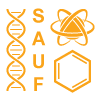Top Level Robotics

Science fiction has been for ages preparing us to the fact that we will see anthropomorphic robots on the streets and in our houses very soon, and they will tirelessly work side by side with people or instead of them. This has not happened so far, as the task turned out to be more complicated than scientists had supposed. But the work is underway, and there is some progress.
The main project of 2018 in the Open Laboratory of Artificial Intelligence and Robotics, created in 2017 on the premises of UIIP NAS of Belarus, was the development of anthropomorphic robots technology. The financial support of the Science Around us Foundation enabled the Institute to purchase the equipment to create anthropomorphic robot Newman.
The solution of the problem started from studying well-known Opensource projects. As a result, the laboratory focused on the international project InMoov.
InMoov is the first anthropomorphic human size robot printed on a 3D printer. The robot was designed by the French fashion designer and sculptor Gael Langevin in 2012. All information about the structure of the robot is available in open sources, which gives developers unlimited opportunities.
The Laboratory used InMoov for training young professionals in the design of mechanical parts and software development. The process of assembling the robot was divided into several stages for the sake of optimozation:
1. Creating the upper body (head, arms, chest)
2. Creating the middle body (torso, back)
3. Creating the lower body (pelvis, legs).
Each of the stages involves creation of a 3D model in the CAD system, filming a video about the assembly, drafting recommendations on the assembly, printing elements on a 3D printer, description of the assembly of elements. The specialists of the Open Laboratory have completed the first stage of building the robot so far. The Open Laboratory plans to use its own developments and engage students and undergraduates to create a robotic platform that would simulate human movements and also create the software for its animation.
Alongside with the creation of the mechanical elements, the Institute is developing an acoustic interface. The UIIP NAS Laboratory of Recognition and Synthesis of Speech is conducting research in the field of computational linguistics technologies, which can later be used to control the robots with the voice. A robot project is being currently implemented that will be able to perceive and process human speech, synthesize it and answer the questions posed.
The research conducted at the Laboratory is the basis for writing and defending master’s works, scientific reports, theses… An interesting personal project is being implemented here in the field of Science Art, which is a relatively new area ofmodern art at the intersection of creativity and technology.
Links:
- https://dev.by/news/uchyonye-delayut-robota
- http://uiip.bas-net.by/work/podgotovka/open-lab/index.php
- http://uiip.bas-net.by/work/podgotovka/open-lab/equipment.php


